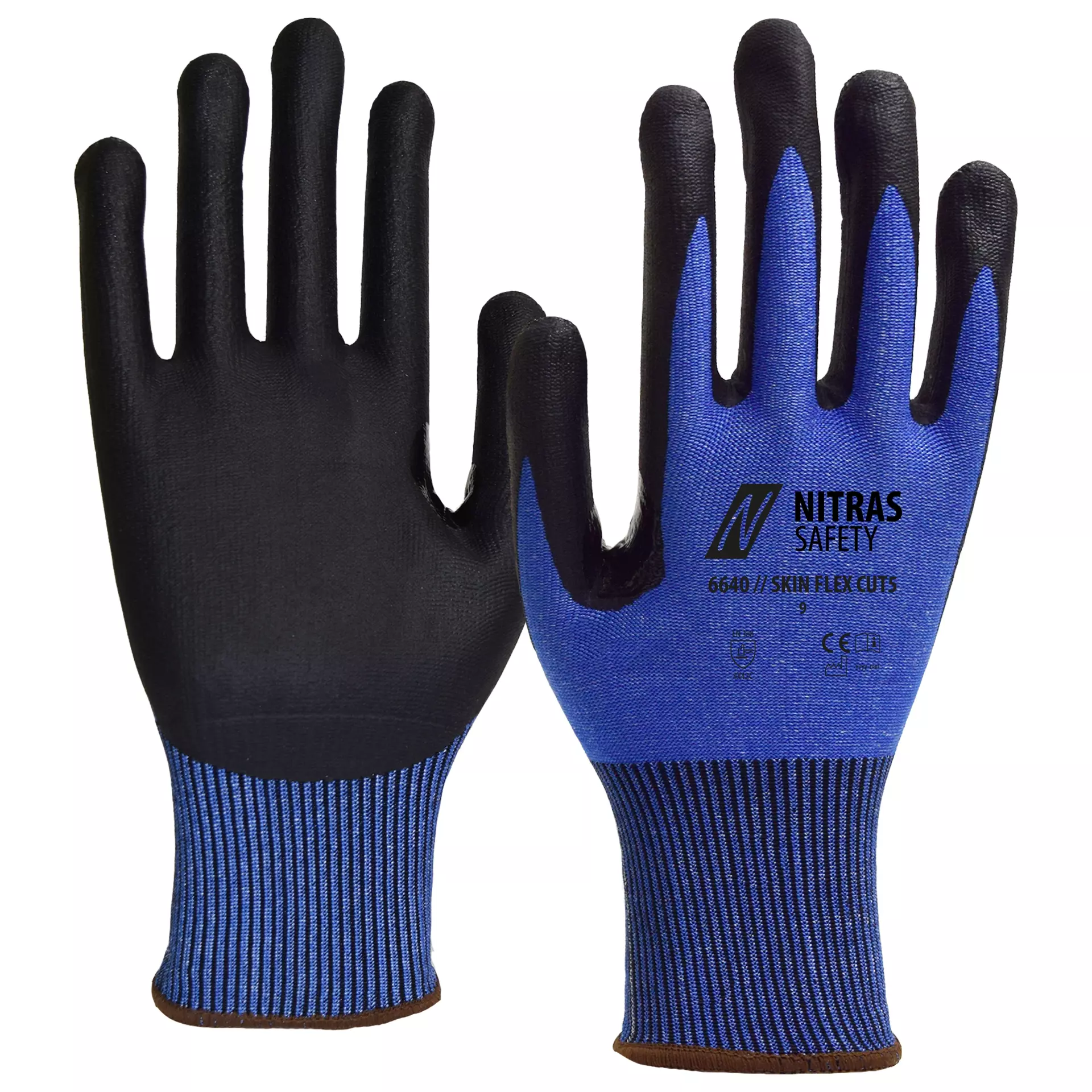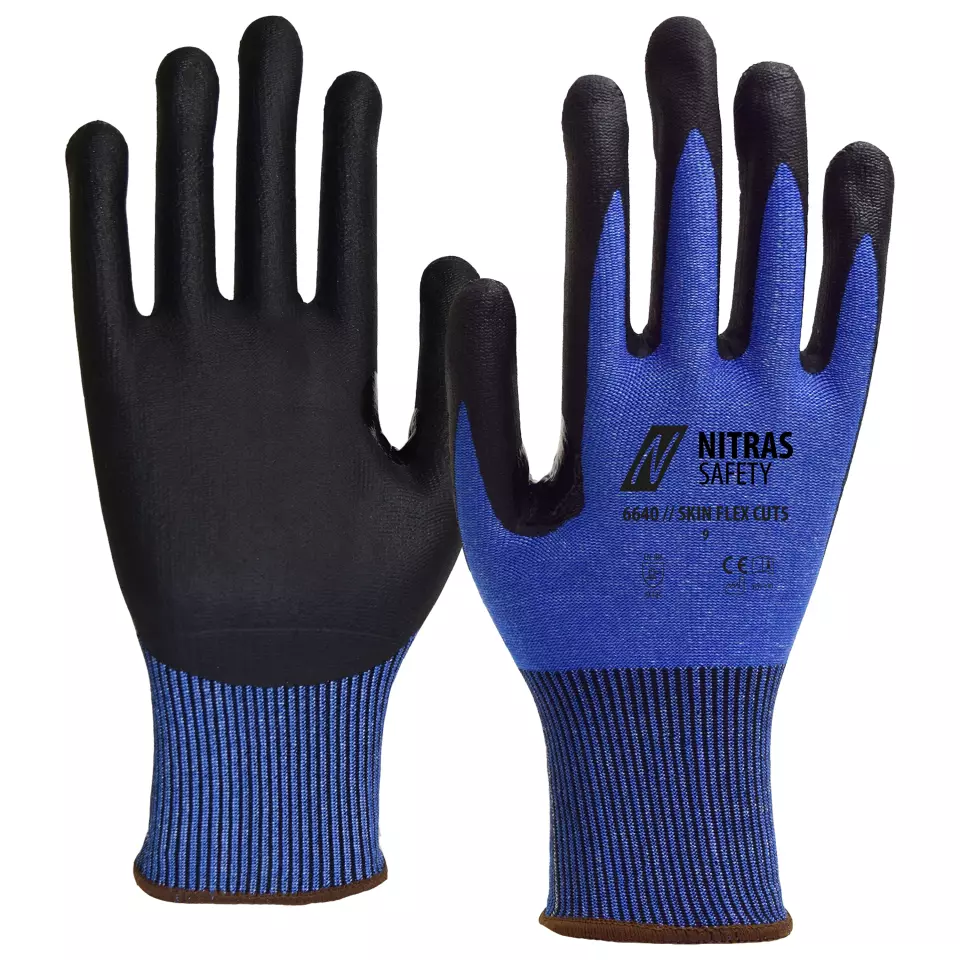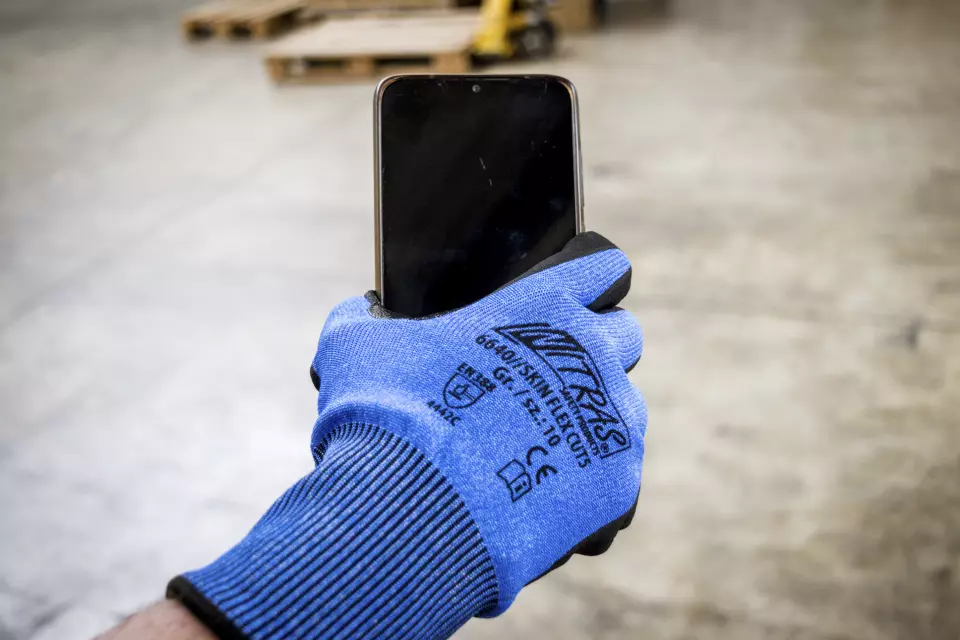

Features You'll Love

Coating Material · Polyurethane (PU)
The substance applied to glove surfaces to enhance grip, durability, and protection, with different materials suited for various work conditions.

EN 388 · Tear Resistance Level 4, Abrasion Resistance Level 4, Puncture Resistance Level 2, Cut Resistance, ISO 13997 Level C
Offers the highest level of protection against tearing, withstanding a strong force before ripping.
Offers the highest level of protection against intense rubbing and wear from rough materials.
Withstands moderate force from sharp objects like heavy-duty splinters or wires.
Offers medium protection against cut risks from handling lightweight metals and plastics.
Nitras
SKIN FLEX CUT5 Cut protection Gloves, Blue, 10 pairs
SKIN FLEX CUT5 Cut protection Gloves, Blue, 10 pairs
5 / 5
49,29 €
Price per 10 pairs
4,93 € / pair
Choose size
Shipping fee is 7,95 € for orders under 80,00 €
Features You'll Love

Coating Material · Polyurethane (PU)
The substance applied to glove surfaces to enhance grip, durability, and protection, with different materials suited for various work conditions.

EN 388 · Tear Resistance Level 4, Abrasion Resistance Level 4, Puncture Resistance Level 2, Cut Resistance, ISO 13997 Level C
Offers the highest level of protection against tearing, withstanding a strong force before ripping.
Offers the highest level of protection against intense rubbing and wear from rough materials.
Withstands moderate force from sharp objects like heavy-duty splinters or wires.
Offers medium protection against cut risks from handling lightweight metals and plastics.
Product description
Advanced cut protection gloves featuring special yarn construction with partial coating on palm and fingertips for enhanced grip and dexterity. These gloves combine high cut resistance with ergonomic design elements including a reinforced thumb crotch and knitted wrist. The specialized construction ensures optimal wearing comfort and precise fit for demanding applications.
Product Features:
- High cut resistance (CUT5)
- Special yarn construction
- Partial coating on palm and fingertips
- Reinforced thumb crotch
- Knitted wrist for secure fit